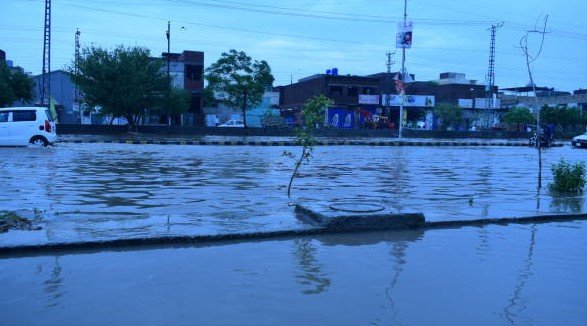Pakistan’s meteorological department released its monthly climate summary, revealing a record-breaking above-average downpour in Pakistan for April 2024. This marks the wettest April since 1961, with data gathered from 25 national climate stations.
Above-average downpour in Pakistan shattered 17 weather records in April, including the highest one-day rainfall, wettest month, and coldest daily temperature. Nationally, the average rainfall significantly surpassed normal levels by a staggering 164%, solidifying April 2024 as the wettest April on record (exceeding the previous record of 55.8mm set in 1983). Certain regions witnessed exceptionally high rainfall in Pakistan.
Several locations experienced historic downpours. Dir, Khyber Pakhtunkhwa (KP), holds the record for the heaviest single-day rainfall (91.0mm) on both April 14th and 20th. Malam-Jabba (KP) takes the crown for the wettest location overall, recording a staggering total rainfall of 520.0mm for the month.
Other notable rainfall amounts include:
- Dir (461.9mm)
- Saidu Sharif (382.0mm)
- Kalam (379.6mm)
- Rawalakot (363.8mm)
- Lower Dir (346.9mm)
- Drosh (300.4mm)
- Kakul (289.0mm)
- Chitral (283.5mm)
- Garhi Dupatta (280.3mm)
- Mirkhani (270.0mm)
- Pattan (261.0mm)
While most areas received significant rainfall, Dadu recorded only trace amounts during the month.
Temperature extremes were also documented. Shaheed Benazirabad, Sindh, experienced the hottest day (43.5°C) on April 8th, while Chitral recorded the coldest day (3.2°C) on April 15th. Interestingly, Chitral also holds the distinction of being the warmest location with an average monthly maximum temperature of 39.4°C.
The report attributes the unusual weather patterns to frequent westerly disturbances entering through western and northern regions, impacting various parts of the country. These disturbances triggered widespread dust storms, moderate to heavy rainfall (including instances of very heavy falls), hailstorms, and snowfall across several provinces. These weather systems also caused flash flooding in Balochistan and upper KP, alongside riverine flooding near the Kabul River.
Such condition presents both challenges and opportunities. While the water benefits agricultural production, it’s crucial to address potential risks like flooding and infrastructure damage.


